Skeletons In The Closet
There are few things I find more ironic than the university’s decision to rename the Connolly Center. It was a good thing, don’t get me wrong. Monuments honoring rapists, and those who protected them, should be erased from the face of the Earth. But here’s my question: What about the rest? What about all the other buildings that pay homage to those horrible men? What about the lectures, programs and spaces on this campus that bare their names? And what if, god forbid, one of those men still worked here? What would happen then? What do you think should happen?
The topic at hand deserves plain language and I’m not known to mince words. This week’s feature story is about Seattle University President Father Stephen Sundborg and his connection to the child sex abuse scandal in the Catholic Church.
This isn’t “gotcha” journalism or clickbait or fake news. This isn’t about politics, either. Any impression you have of the Spectator, good or bad, doesn’t matter right now. This is about the systematic concealment of the molestation, abuse and rape of women and children.
The rape of women and children. Those words have been playing on repeat in my head for months, and it starts back up every time I see a cross on a church, I hear the word “Father” or I walk past the Arrupe House on my way to class. I can’t begin to fathom what it must be like for the victims. And there are many. Across the country, reports have been emerging of people who have been abused by one or more priests. Catholic institutions are buckling under the cost of the settlements they’re being forced to pay to the victims, but no amount of money will change what happened.
The Spectator decided to work on this story months ago. What we have is largely retrospective since most of it has been published in some form or another. Though it did cause a stir back then, many of those named in the accusations, including Father Sundborg, have yet to face individual punitive measures of any kind.
I’ve been a student at Seattle University for four long years, and I can say with confidence that I’ve seen the best and the worst of this place. You might not know anybody working at the Spectator. Hell, maybe you just found out we have a school newspaper. None of that matters.
As a newspaper, our prerogative is apolitical. This isn’t a call to action. This is a reckoning of sorts. There are powerful men at Seattle University, men who can write their own history. Fearing them is natural, smart even. But its time we reconsidered preconceived notions we have of this institution and its leadership.
If nothing else, this is our best attempt to publicly recognize the crimes of the Catholic Church and acknowledge the everlasting and ever-present pain of its victims. For a moment, try to feel the pain they must have felt, the trauma that haunted them for years and the scars they carry to this day. I hope—the Spectator hopes—that you won’t read this and look the other way, like so many did all those years ago.
-Nick Turner, Former Editor-in-Chief
Seattle University’s Systemic Support of Sexual Abuse
By Shelby Barnes, Kayla Collins, Anna Kaplan, Michelle Newblom, Tess Riski, Nick Turner and Haley Witt
In March, The Spectator reported that David Patrick Connor, an assistant professor in the Seattle U criminal justice department, was placed on paid leave. A group of students found that he was convicted of a felony involving multiple instances of criminal sexual misconduct of a 13-year-old minor in 2006 before Connor was hired as a faculty member at Seattle U. Today — three months after the convictions surfaced — Connor continues to receive his salary from the university.
Connor’s felony conviction was not only identified by a routine background check, but was also self-disclosed by Connor himself before he was hired. Despite following procedure, neither the dean nor provost—both of whom are responsible for hiring new professors—were aware of the existence or details of the conviction, according to an email statement sent in March by Interim Provost Robert Dullea.
“This wasn’t a miscommunication between departments in the first place,” said Ash Vera, president of the Student Support Network (SSN) and one of Connor’s former students.
“Seattle University is completely liable.”
Connor submitted the necessary paperwork on three separate occasions throughout the interview process according to Matthew Hickman, Interim Director of the Graduate Program and a professor in the Criminal Justice Department.
“If he submitted it once and somebody lost it, I could understand that. But three separate times… it’s a little… I’m having a hard time buying that story,” Hickman said. He went on to defend Connor, arguing that the university may have made a mistake by placing him on leave.
“You know he’s been working here three years, teaching and doing research and has quite an impressive trajectory but now it’s been completely derailed, you know, and Seattle University is not exactly behaving in a very Jesuit manor about this,” Hickman said with laughter. “Because normally Jesuits are all about recognizing that people can change and do better with their life and, here, they have kind of kicked him to curb and it’s very likely that he won’t be returning.”
Hickman continued.
“He is still employed technically… He was going to be tenured and retained he’s a great scholar and a great teacher,” Hickman said. “Seattle university and their handling of this has been pretty poor. It’s not clear that he even needed to be placed on leave.”
Vera believes the way that the university handled the issue “highlights the fact that we definitely lack in the way that we train professors to talk about sexual assault.”
Vera is fearful of the attitudes of some Seattle U professors surrounding rape and sexual assault and how this could impact classmates and peers. “Students don’t feel comfortable enough to bring up concerns about sexual assault with the current resources available,” they said.
Vera said it was shocking when professors would openly speak about sexual assault in a way that didn’t consider the extra care and sensitivity that’s needed when discussing topics like these, “especially considering that college universities are one of the number one places that students and people experience sexual assault in their lifetime,” they said.
University Counsel Mary Petersen denies that anyone knew about Connor’s criminal history at the time of his hiring.
“It was a human error. The information was missed and not passed along,” Petersen said.“To my knowledge, there was never a decision made by anyone in the university,” to hire Connor in spite of his status as a sex offender.
Hickman, who teaches classes on ethics and decision making and who said he approved hiring Connor, said, “It’s not the case that he is some predatory sex fiend looking for the next victim here on Seattle University’s campus but, no matter what, he is labeled [a] sex offender and that’s what people hear and react to and it’s just…It’s an unfortunate thing.”
On multiple occasions in 2006, Connor had intercourse with and engaged in other sexual acts with the 13-year-old girl. Connor was 21 years old at the time of the assaults.
On Connor’s fourth trip to meet the girl, he was apprehended by police and charged with four counts of third-degree criminal sexual conduct— which is a felony punishable by up to 15 years in prison—along with four counts of fourth-degree criminal sexual conduct, a two-year misdemeanor.
After being convicted of criminal sexual misconduct, Connor served as an educator. This position granted him access to a number of underage children. During his years as a professor at Seattle U, Connor worked in close proximity to minors.
The Middle College High School is an alternative high school for local students. The high school is housed in the Loyola building along the upper-mall of campus, which is situated just a few-hundred yards away from the Casey building where Connor’s office was located.
Petersen said she is unable to comment on whether or not it was illegal for Connor to teach on a campus on which minors are present.
“That’s a question that I would need to decline to answer,” Petersen said. “Because it’s asking for my legal advice to the university.”
Vera, who took the first class Connor taught at Seattle U, was rather disturbed by his lecture. Immediately following their first day, Vera made a report regarding the rhetoric he used when speaking about rape and victims of sexual assault.
Vera said that they know of multiple students within the criminal justice program who have taken Connor’s class and found that Connor’s behavior and attitude surrounding rape and sexual assault made them feel uncomfortable.
“A lot of other students within the criminal justice department major have had incidences with him that made them feel extremely uncomfortable regarding the way he talks about sexual assault,” Vera said.
It is worth nothing that Connor’s research areas focus on sex offender policy and treatment.
The morning after a group of students discovered Connor’s criminal history, they brought the information to Jacqueline Helfgott, the chair of the criminal justice department, as well as their professor at the time.
When Vera shared the information with Helfgott, they were surprised and disappointed by her response.
“She was very defensive. She yelled at me and the other student,” Vera said. “She was not supportive of any sort. She actually seemed almost upset that we were talking about it and almost upset at the fact that anyone would accuse him of this.”
While Vera felt personally harmed by the interactions with Helfgott, more than anything they worried for their classmates who may approach Helfgott with concerns of sexual assault in the future.
When asked if any reports had been made against Connor, Helfgott claimed that “he was very highly regarded by the students,” and that no reports have ever been made against him despite the fact that Vera alone had already submitted multiple reports.
“I have heard from other students and they have gone to her and she straight out lied to them about the events that took place or the way that they happened and so that’s really concerning,” Vera said.
As students and other concerned university members seek support, the SSN offers a safe place for anyone who wants to talk about their concerns regarding the situation more in private, Vera said.
SSN is independent from formal sexual assault resources for students on campus. They have created a channel to discuss these topics as, “many survivors do not trust formal systems or those in positions of authority,” according to their website.
“All of our leaders are people who have experienced trauma…it’s all student led. It’s a non-profit organization and we are here on campus for students by students.”
Pending the investigation into Connor, he will remain on paid administrative leave.
“First the Russians…then the Jesuits”: The Jesuit’s History in Alaska
During the 1960s and 70s, a generation of children in remote Alaskan villages were abused, molested and raped by members of the Oregon Province of the Society of Jesus. With limited access to healthcare and public transportation, for decades the community was at the mercy of predatorial Jesuit priests.
Not only were their actions concealed, but those priests with accusations of sexual abuse levelled against them were sent to these remote Alaskan villages—“dumping grounds for problem priests” as many still refer to them—to escape public scrutiny, media attention and, ultimately, legal ramifications.
The Jesuits settled in 2007 against accusations of sexual abuse in Alaska. $50 million was distributed to 110 victims in native Alaskan villages by the Oregon Province. Four years after this settlement, the Northwest Jesuits had to pay over $166 million to around 500 sex abuse victims that were in both in the Northwest and Alaska.
“The Jesuits participated in, frankly, not only the sexual abuse of many of these villages, but the cultural annihilation of many of these people,” said John Manly, an attorney who represents sex abuse victims, in an interview last week with The Spectator. “Some Jesuit scholars have been honest about it, but others still want to paint this picture of how they helped these people. They didn’t help them. They destroyed their culture and they attacked them for money.”
Manly has represented hundreds of victims of sexual abuse, including plaintiffs in a $140 million settlement against the Los Angeles Unified School District and alleged victims of Larry Nassar, the doctor for the U.S. Olympic Gymnastics Team.
Years ago, Manly represented victims who were allegedly abused by Jesuit priests in California and Alaska.
“President Sundborg is obviously a very bright man who, like many Jesuits, has done a lot of good in this life,” Manly said. “But when you counterbalance that with the mishandling of these cases…His criticism of the bishops, for mishandling sexual abuse before his own conduct was exposed while he was the Provincial of the Oregon Provence, is utterly hypocritical.”
Manly recalled riding snowmobiles, ATVs and dog sleds to travel across Alaska; he even took the Alaskan Bar exam because there were so many plaintiffs. He spoke of cities and towns where the people hunted moose and reindeer in the winter, and caught fish and picked berries in the summer.
“That’s how they survive. And these people are incredibly decent, kind people and in many ways, even today, very vulnerable,” Manly said. “First, the Russians came and used them. And then, unfortunately, the Jesuits came and used them. And in these places, where predators were assigned, they destroyed these places.”
Seattle U President Fr. Stephen Sundborg, S.J. served as Provincial of the Oregon Province of the Society of Jesus from 1990 to 1996. He was appointed to the position of president at Seattle U in 1997.
Since this time period, hundreds of victims of sexual abuse have come forward, many who had been abused during the time that Sundborg was provincial. Allegedly, the Jesuits did not report anything to local law enforcement at the time, nor did Sundborg remove priests accused of sexually abusing children. Instead, he allegedly chose to relocate them, although he denies any knowledge of the so-called problem priests.
“You have to look at the whole person and draw your own conclusions about who he really is…Do I think that was right? No, I don’t, but I think people should look at his testimony and look at the facts and make their own judgement,” Manly said. “I know what I think.”
Buildings on Campus Bear Names of Those Who Covered Up Sexual Misconduct
The Seattle U Board of Trustees approved the renaming of the Connolly Center on May 4, 2018. This change comes two years after The Seattle Times published an article in March of 2016 detailing Archbishop Thomas Connolly’s continual placement of priest Michael Cody after he had been informed of Cody’s sexual abuse of minors. Letters surfaced that proved Connolly’s knowledge of Cody’s dangerous behavior, as he was warned to remove Cody from parish work.
And yet, Connolly continued to move him around.
“Seattle University has taken a zero tolerance approach to the issue of sexual abuse of children,” Sundborg wrote in a May 4 email to the entire university community. “This has been demonstrated in part by the university’s previous actions removing the names of two deceased Jesuits from endowed professorships upon learning of their abuse of minors, and now with yesterday’s vote by the board.”
“May this action also provide further healing for survivors of child sexual abuse.”
Despite Seattle U’s zero tolerance claim, controversy surrounds the names of other buildings on campus. Currently, there is a building and an award named after former Archbishop Raymond Hunthausen.
Hunthausen Hall and the Archbishop Raymond G. Hunthausen Award honor the Archbishop of Seattle from 1975-1991. The award is described on Seattle U’s website as “Seattle University’s most prestigious honor.”
Letters also detail the possibility of Hunthausen knowingly attempting to send Cody to another diocese. A 1988 letter addressed to Reverend Thomas J. Grady of Orlando, Fla. from Hunthausen discloses Hunthausen’s knowledge of Cody and his decision to help move him.
“The purpose of this letter is to make you aware of certain items in Father Cody’s past which have only now been discovered in the Secret Archives,” Hunthausen wrote. He further stated that following the conclusion of Cody’s treatment, the Seattle chancery office never received complaints regarding pedophilia.
After disclosing this information, Hunthausen expressed his desire to help Cody work in Grady’s diocese. “In conclusion, I want to be able to assist Father Cody in his request to do some pastoral work in your diocese. At the same time, I want to share with you this report from Father Cody’s file.”
In another letter, dated just one year earlier, a memo with the subject line “Unassignables” discussed Cody’s mental state. “I presume we support Mike Cody; that’s an example of a permanent disability. I was wondering what technique we used with him? I think we called it a ‘medical retirement.’”
The memo then goes on to distinguish two categories of “disabled.”
“First, those for whom nothing can be done to ever permit their return to active ministry; and second, those who have reasonable hope of return.” The memo never specified which category Cody fell under, but the subject line “Unassignables” and the adressment of him as a “permanent disability” cause concern. It was not enough concern for Hunthausen, as he wished to assist Cody in performing pastoral work in Grady’s diocese.
Fr. Patrick G. O’Donnell was sent to Seattle in 1976 for treatment after molesting boys in Spokane. The Spokane Bishop at the time–Fr. Bernard J. Topel–sent O’Donnell to Hunthausen.
Topel was Hunthausen’s close friend as well as his former college teacher and mentor, but Hunthausen testified that Topel never informed him that O’Donnell was a serial child abuser.
Hunthausen also granted O’Donnell full powers of ministry in the archdiocese without the standard documentation that comes with the moving of priests to another diocese. He saw no need for a background check, interview or investigation because of his relationship with Topel.
In his testimony, Hunthausen claimed, “It was a breach on my part. It’s hard to acknowledge that now. It hurts me.”
Even with the admittance of his close relationship with Topel, Hunthausen stated that Topel never told him that O’Donnell was a child abuser.
Still, Cody and O’Donnell aren’t the only ones Hunthausen might have known about. James McGreal retired in 1988, but according to a Seattle Post-Intelligencer article published in 2003, former Archbishop Hunthausen was aware of McGreal’s abuse in 1977. He didn’t take him out of ministry for 11 years.
Hunthausen sent McGreal to a treatment center in Washington, D.C., and the treatment supervisor warned that McGreal should not be around young boys when he returned to Seattle. Despite these warnings, Hunthausen placed McGreal in a parish at St. Anthony in Renton.
While there, McGreal abused a 12-year-old boy for four years.
Seattle U’s history of sexual abuse doesn’t just revolve around members possibly knowing about these crimes. It revolves around members of the Seattle U community accused of committing sexual abuse as well.
Michael Toulouse was a Seattle U faculty member from 1950 until 1976, when he passed away.
Toulouse’s first accusation was made in 1950 when the father of a 14-year-old boy alleging sexual abuse came into the president of Gonzaga University’s office with a pistol. Toulouse taught at Gonzaga at this time.
Toulouse was then relocated to Seattle U where the sexual abuse did not stop.
Mike Pfau was one of the plaintiff’s lawyers in a case accusing Toulouse of molesting a 12-year-old boy on Seattle U campus in 1968. Sundborg stated that even though the Jesuit residence where the abuse occured is on Seattle U campus, actions that occur on campus fall under the authority of the province and not the university.
“It’s clear from the records that Toulouse was transferred in the 1950s because he molested a child at Gonzaga Prep in Spokane,” Pfau said in a June 2018 interview with the Spectator. “It is also fairly clear that the Jesuits at Seattle University likely knew about this before they placed him at SU.”
University Counsel Mary Petersen told The Spectator that the university paid off portions of the settlements for lawsuits against Toulouse.
“There was a lawsuit involving Fr. Toulouse,” Petersen said. “The university paid a portion of those settlements.”
She could not disclose the dollar amount of settlements that the university paid on Toulouse’s behalf.
While Toulouse was a teacher at Seattle U, then-president Fr. Albert A. Lemieux, S.J. expressed concern for Toulouse. In 1963, he listed him as “a source of worry in the classroom and elsewhere for various reasons.” Nevertheless, Toulouse taught until his death in 1976.
Currently, Seattle U’s Lemieux Library is named after the former president who retired in 1965.
In 1980, four years after the death of Toulouse and one year after the passing of Lemieux, philosophy lectures were named to honor Toulouse. Sundborg became president in 1997, and these philosophy lectures continued to honor Toulouse until at least 1999.
According to a 2006 article from The Seattle Times, “The president of Seattle University said Thursday he has no doubt that a Jesuit priest who taught at the school from about 1950 to 1976 sexually molested young boys.”
“But the Rev. Stephen Sundborg also said he believed that Seattle University bears no legal responsibility for the actions of Michael Toulouse, because any acts of sexual abuse he carried out occurred outside the scope of his official duties as a teacher at the school.”
Currently, the Lemieux Library and the Seattle U School of Law bear Fr. Sundborg’s name.
President Father Stephen Sundborg, S.J.’s connection to sexual abuse cases
“You can leave the Catholic Church, but the Catholic Church won’t leave you… It gets ahold of you at a very deep, imaginative or emotional level, not just intellectual,” Sundborg said in a Seattle Times article from December 2005.
The statement made by Sundborg was in reference to returning Catholic Church members who had left amidst the Spotlight investigation carried out by the Boston Globe in January 2002. The investigation exposed the Catholic Church and its leaders who were responsible for relocating priests who were guilty of molesting children.
Despite the Catholics who, in light of the Spotlight investigation, rekindled their commitment to the Church in December 2002, the deep and emotional hold that the Catholic Church held on some wouldn’t come to fruition until late 2005 and early 2006. During this time, survivors of the Jesuits who had sexually abused them would come forward and reveal their varying accounts of assault.
Because the victims of abuse had been silenced for so long, the statute of limitations on the allegations expired. This is why the vast majority of Jane and John Does had to file civil lawsuits, rather than the State of Alaska bringing criminal charges against those accused.
The lawsuits that began in late 2005 named Sundborg, who some survivors alleged that he, while provincial of the province, was responsible for helping conceal Jesuits that engaged in sexual misconduct.
Of the allegations, Sundborg was alleged to have allowed two Jesuits, Father James E. Poole and Father Henry Hargreaves, to continue working within the Catholic Church despite their previous histories of sexual misconduct with minors. Sundborg insists though that he did not know of these Jesuits’ histories, nor did he know that they abused and harassed minors.
Although Sundborg claims he did not know that the abuse of minors by Jesuits was happening during his time as provincial, it was brought to Sundborg’s attention that Father Poole was involved in sexual misconduct with adults.
From a deposition made by Sundborg in October 2005, Sundborg was questioned whether he ever tried to get the names of the victims from Father Poole. Sundborg responded that no, he did not.
When asked in a follow up question whether he ever considered getting the names of those abused by Poole, Sundborg said no, and when asked why, Sundborg responded that he “left that to the forensic evaluation who seemed in a better position to be able to look at names and compare contents and sexual histories to see the completeness of the list.”
Poole, who abused over 25 victims during his time as a Jesuit, was evaluated by Dr. Stuart Greenberg, a Seattle psychologist who worked in sexual abuse cases and also as a consultant for the Archdiocese of Seattle. After his evaluation, Poole was sent to sexual deviancy treatment at Jemez Springs in New Mexico.
Following his treatment, Sundborg admitted Poole back into ministry because he believed Poole could do ministry and could function without risk to anyone. When Sundborg was asked during his deposition whether he kept track of Jesuits who reoffended following their treatment, he said no, he did not.
Later in the deposition, Sundborg said that he dealt with victims of Poole only if they contacted him bringing forward an accusation. Sundborg did not attempt to reach out to other victims, but he did say that Holly Nelson, a victim of Poole’s, took on the task and was “contacting as many people that she could who were connected with the Jesuit volunteer corps or service in Nome during the time of Father Poole’s ministry there.”
Sundborg claimed that he knew she was doing this, but when asked whether she had resources to do the outreach or whether she had a full-time job at the time, Sundborg said that he did not know to both questions.
Johnson, after attempting to reach out to victims but later deciding to end her efforts, sent Sundborg a letter stating: “As far as contacting anyone further, I am finished. I called only my friends and have found this to be extremely painful and raw, not only with respect to each woman’s experience, but rehashing my own over and over again. I feel a range of emotions from rage to deep sadness.”
When Sundborg was asked whether he undertook the investigation following Johnson’s resignation, he responded that he did not. When asked why, Sundborg explained that he thought it was best if they came forward, rather than he or someone else trying to seek out people who may have been abused in fear that the investigation would cause more damage than had originally been done.
Sundborg further claimed he was counseled, and it was explained that for a professional such as himself, it was not advised to investigate. This counsel and advice was given by Greenberg.
In a letter to Father Poole, who had allegedly abused Nelson, Sundborg wrote: “One thing that is at least worth of us discussing is the following: In light of the fact that there may be as many as 25 to 30 women out there who may be living with the experience of having been taken advantage of by you sexually, would it make sense for you to write some form of a letter of apology which could be published in a Province and Jesuit Volunteer Corps newsletter?”
“…There are big issues around this approach for your reputation, for requests for financial help it might elicit, for the potential of the press picking up on it, but it might be what we are called to do for the sake of these women and at the same time might be one of the ways in which the possibilities of ministry would be freed up for you. Worth considering as a strategy.”
Following the deposition, Sundborg was asked in a December 2005 Seattle Times article about the controversy of the lawsuits, to which Sundborg responded that the lawsuit was “damaging to my reputation as president of the university.”
On the same day as the publishing of the December Seattle Times article, Sundborg released a university-wide statement explaining his thoughts on the lawsuit and how he perceived his professional image following the accusations.
“I am at peace with myself because I can be and am trusted for how I acted as Jesuit Provincial and how I act as President of Seattle University,” Sundborg wrote. “Our focus needs to be on how we use this situation to renew our commitment to address and overcome the abuse of others, particularly the sexual abuse of children and minors.”
After The Spectator reached out multiple times, Fr. Stephen Sundborg S.J. declined to comment on this article.
Sundborg Sent Problem Priests To Be Evaluated by Two Seattle U Professors and a Disturbed Psychologist
From 1985-2004 Seattle U professors conducted abuse evaluations of both priests and their victims.
Therapy and Renewal Associates (TARA) was founded in 1985 by two Seattle U professors, Sister Fran Ferder and Father John Heagle, with the help of benefactor Archbishop Raymond Hunthausen.
Located in Seattle, Wash., TARA’s services were utilized on behalf of the Archdiocese.
While practicing at TARA, Ferder and Heagle both worked at Seattle U’s School of Theology and Ministry as adjunct professors. According to his LinkedIn profile, Heagle started teaching at Seattle U the same year that TARA opened.
When asked in the 2005 deposition if he had used TARA for “his priests,” Sundborg said, “yes.”
During his testimony, Sundborg said that he had sent Poole to psychologists Greenberg and Judy Knight. Knight worked as a counselor for TARA, to whom Ferder often deferred her clients because Ferder’s own docket was full.
TARA did not practice solely on priests from local provinces. According to psychological assessments conducted by TARA in 1993, priests from the Franciscan Province of Santa Barbara, Calif., were referred to the clinic for sexual abuse allegations.
According to a 2006 article published by Seattle Weekly, an abuse victim treated by TARA, identified as K.M., filed a lawsuit. In this suit, K.M. alleged that Ferder and Knight had encouraged her not to file a lawsuit against the church for her abuse. The suit also alleged that Ferder advised K.M. that the statute of limitations for her case had likely lapsed, when in fact, it had not.
In the same Seattle Weekly article, Ferder said she received from the archdiocese not only counseling fees but also a monthly retainer of $1,000. However, this figure was reported as $8,000 in Ferder’s 1995 deposition.
Ferder and Heagle are no longer employed by Seattle U.
The building where TARA was previously located is now a place of residence for Vietnamese-Catholic clergy.
In addition to being evaluated by a counselor at TARA, Sundborg also referred Poole to Greenberg, who would later be arrested for suspected voyeurism.
In 2007, Greenberg committed suicide in a Renton motel. Before his death, Greenberg was arrested and suspended from practice when allegations surfaced that he had secretly videotaped clients in his office bathroom. According to a 2011 article by The Seattle Times, he used the same camera in the same bathroom to film himself masturbating.
Greenberg served as president of the American Board of Forensic Psychology in 2002-03 and was nationally renowned.
Poole was not the only referral Sundborg made to Greenberg. In his 2005 deposition, Sundborg said he sent these additional priests to Greenberg: Father Jim Laudwein, Father Craig Boly, Father John Dunn, Father Larry Gooley, Father L. Pat Carroll and Father John Fuchs.
Of these priests, Poole, Carroll and Dunn have died, and Laudwein was removed from active ministry in 2005 due to an allegation that he sexually abused a minor in the 1980s in Alaska.
Gooley, Boly and Fuchs are still practicing in churches and schools across the Pacific Northwest.
Gooley is the Pastor at St. Mary’s by the Sea, a Catholic church in Rockaway Beach, Ore. St. Mary’s website says that Gooley has been a Jesuit for over 60 years.
Boly is the Pastor at the St. Ignatius Parish Church and School in Portland, Ore.
In 1992, Boly wrote an essay in a book titled “Jesuits in Profile: Alive and Well in the U.S.” in which he detailed his time working at the Seattle Preparatory School, which is a local Catholic high school that, for decades, has had partnerships with Seattle U, specifically the now-defunct Matteo Ricci College.
“I remember being reprimanded more than once for spending too much time with visiting coeds from other local high schools,” Boly wrote in the essay. “My rationalization was that if attractive young women brought their problems to me, it must be an opportunity for apostolic service. What I neglected to consider was what needs of my own the interactions with the women students were meeting.”
Sundborg also contributed an essay to the book, but later testified in 2005 that he had no recollection of reading said book.
Fuchs is a substitute priest at St. Patrick’s Catholic School and Church in Tacoma, Wash. According to the website, Fuchs assists with the spiritual formation of the Bellarmine faculty and staff and offers spiritual direction for individuals, among other tasks.
A receptionist at St. Patrick’s said that Fuchs isn’t there very often because he lives at Bellarmine Preparatory School, a Jesuit high school in Tacoma.
In 2016, Fuchs received the St. Robert Bellarmine Award, which is the school’s highest honor. According to the school’s website, it is awarded annually to “a person of distinction who has served the Church and the broader community in an outstanding way reflective of the philosophy and goals of Bellarmine.”
Some university affiliates who have been accused of sexual assault and abuse were appointed to the upper-administration at Seattle U.
In the late-90s, the university hired Father Tony Harris, S.J. Harris spent the majority of his time at Seattle U as the Vice President for Ministry and Mission. According to lawsuits, Harris was among three priests who made repeated homosexual advances to a young seminary student.
News articles from 2006 show that it was both Sundborg and the Board of Trustees who decided to hire Harris despite knowing of the allegations leveled against him.
Board of Trustees Knowingly Hired Former Vice President Amidst Assault Allegations
The Board of Trustees is the governing body at Seattle U. It fluctuates from approximately 30-40 members, who are replaced every couple of years, and are notable members of the greater Seattle community. They have experience in sectors such as real estate, non-profit, military and education. Many are CEOs, presidents and entrepreneurs. The majority are wealthy, white and male.
Oftentimes university decisions seem to originate from Sundborg and other administrators, when in fact, the board makes virtually every financial and institutional decision on behalf of the university.
“The Board of Trustees has the ultimate authority for Seattle University for policy, for all major decisions, for the carrying out of the mission, for the safety of the students, for the integrity of the academic programs,” Sundborg told The Spectator in April 2018. “They have the ultimate authority on that. They are the ones who hire and fire the president.”
While the board’s recent decision to rename Connolly seems to be supportive of sexual assault survivors, it is also true that in the past, the board has voted to hire those who have been accused of sexual assault.
When the university decided to recruit Harris to the position of vice president for mission and ministry in the late-90s, it was aware of the accusations of sexual abuse leveled against Harris. Prior to the allegations resurfacing in 2006, the Jesuits had earlier settled a lawsuit involving Harris and two other priests for an undisclosed amount.
“He’s been an excellent vice president for ministry and mission, and I know him very, very well and admire him,” Sundborg said in 2006 following Harris’ resignation. “He came to this decision in light of the overall atmosphere created around the sexual-abuse issue.”
The university hired Harris despite knowing of the accusations. In a 2006 article from the Spokesman-Review, Sundborg said the decision to hire Harris was made in part by the board.
“It was bad judgment that [Harris had] already apologized for and was ashamed about,” Sundborg said in the article. “I went to the Board of Trustees and explained the situation and the background. They had questions about that. Then they approved the appointment of Harris.
In an April 2018 interview with The Spectator, Trustee Chair Robert Ratliffe described his reaction when he was recruited onto the Board of Regents 22 years ago.
“Anytime somebody with a Roman collar asks me to do something, I say, ‘Yes sir I will do that for you,’” Ratliffe said. The Spectator was unable to get into contact with a representative from the Board of Trustees for comment about their reasoning for hiring Harris.
University Council Mary Peterson directs the university in all legal matters and is the legal advisor to the Board of Trustees, the president and other senior administrators.
Petersen told The Spectator that, had the allegations against Sundborg surfaced in 2018, as opposed to the early-2000s, the administration would have still responded in the exact same manner, saying they “responded responsibly” 10 years ago and would do so again.
“No,” Petersen said when asked if the administration contemplated asking Sundborg to step down from his role at the time the lawsuits surfaced. “The allegations were determined to be unfounded. And even if there had been a discussion, I wouldn’t be able to share it with you because it would be privileged.”
Petersen said the university did not pay any of the settlements for the 2009 lawsuit, although the university did pay out settlements from the lawsuit against Toulouse.
Petersen explained that Sundborg had no knowledge of Poole’s abuse of minors during his time as provincial, though he may have been aware of Poole’s alleged abuse of women.
“The victims about whom Father Steve had knowledge were adult women,” Petersen said, though later in the interview she rephrased her statement, saying she’s not sure if Sundborg was aware of Poole’s sexual misconduct or, rather, of his sexual conduct in general.
When asked if the cabinet or Board of Trustees was aware of Sundborg’s knowledge of Poole’s abuse of women, Petersen said she could not comment on “privileged communication,” and that certain client-attorney conversations to which she, as university counsel, was purvey, must be kept confidential.
“I don’t know. I can’t speak to what the Board of Trustees or Father Steve may have discussed because that would be privileged,” Petersen said. “Certainly the university would not have any tolerance for the sexual abuse of adult women, men, children or anyone. That’s inconsistent with the university’s values and its mission and our policies.”
Throughout the last century, it has been required that the president of Seattle U be Jesuit. But in 2016, the Board of Trustees altered this bylaw, effectively removing this requirement. In other words, the president who succeeds Sundborg may not be a Jesuit.
Sundborg receives a salary, which is then deferred to Arrupe Jesuit community at Seattle U. For Fiscal Year 2019, Sundborg’s salary was raised to $461,440, according to Vice President for Human Resources Michelle Clements.
Members of the Society of Jesus take a vow to poverty as part of their priesthood.
“Let’s be clear,” said Manly, the attorney who brought civil charges against Sundborg in the early-2000s. “Father Sundborg isn’t living a life of poverty… Let’s not pretend that this is poverty, okay? We gotta call it what it is. It’s an incredibly luxurious lifestyle.”
Without a Jesuit president of Seattle U who can defer their compensation to the Jesuit community, it remains unclear how the university will financially support the community.
A recent purchase on the part of the university administration and the Board of Trustees can arguably indicate a growing sense of anxiety regarding Seattle U’s ability to attract and retain a strong Jesuit community while also securing them a financial future.
In 2009, the Oregon Province of the Society of Jesus declared bankruptcy after paying out $84 million in settlements to about 200 victims of sex abuse who came forward. According to The Seattle Times, the province was facing about 200 more claims when it filed for Chapter 11. In 2011, the Jesuits agreed to pay an additional $166.1 million to settle about 500 victims of sexual and physical abuse—the largest monetary payout by a religious order at the time, and one of the largest in the United States from the Roman Catholic Church.
In the wake of this bankruptcy, the province began selling off its properties across the United States.
For decades, Seattle U Jesuits had been frequenting a two-story lakeside home in Beaver Lake in Sammamish, Wash. In 2014, the university purchased the house for $900,000 in tuition dollars from the Society of Jesus, which is sometimes listed as The Pioneer Educational Society on real estate documents. Because the province was—and still is today—reeling from settlements from the child sex abuse scandal, administrators and trustees say it is likely that the Jesuits would have lost the property had Seattle U not purchased it.
“Part of their ethos is to live together as a group of men. And so having a place to get away from here and still be in community with their brother Jesuits is why it was thought long ago that they should have a place to go,” Trustee Chair Ratliffe said an April 2018 interview with The Spectator. “They used to have multiple [properties] in the Oregon Province. Today there’s not as many. But we thought the Beaver Lake house was something we should buy and they should have that for their benefit. It’s not a very expensive piece of real estate, by the way.”
While Ratliffe sincerely hopes the next president will be a Jesuit, he said the bylaw change is responding to an issue of “supply and demand” among qualified and interested Jesuits.
“What’s changed, unfortunately, is the number of Jesuits,” Ratliffe said. “So it’s really a supply and demand thing. And I think Steve [Sundborg] would tell you that we have a lot of Jesuits who really wanna give back to the community, they want to be leading parishes, and not being in university environments as much. It’s harder to find those guys…There’s just fewer and fewer of those. We’ve made a real effort to do what we can at this early stage because we’ve still got Steve for awhile but we want to make sure we’re trying to identify what Jesuits are out there in the United States that might be an appropriate person to eventually talk to about the presidency of Seattle University.”
Today, only 15 of the remaining 28 American Jesuit Colleges and Universities still have Jesuit presidents.
Editor’s note: The Spectator Editorial Board recognizes that the number of victims involved in these cases is overwhelmingly unknown. We hope to bring the significance of the extent and outreach of these situations to the greater Seattle community. Although the university has taken steps to rename Connolly—even though it came over two years after The Seattle Times article—there is more to be done. Awards and buildings still retain the names of problematic Jesuits discussed in this article.
As of today, Hunthausen Hall and Lemieux Library bear names of those involved in covering up alleged sexual assault. The Lemieux Library and the Sullivan Hall Law School also bear plaques honoring President Father Stephen Sundborg S.J., who has been named in a number of these sexual abuse lawsuits.
Correction: a previous edition of the story stated that Seattle University President Fr. Stephen Sundborg, S.J. and Seattle University settled two independent cases pertaining to child sex abuse in 2006. The university and Fr. Sundborg were not a party to these two lawsuits. Fr. Sundborg was legally named a defendant in a 2009 lawsuit which accused him of covering up the sex abuse of minors while he served as provincial for the Oregon Province of the Society of Jesus from 1990-1996. This case was later settled outside of court and a judge dismissed Fr. Sundborg’s involvement. The only lawsuit pertaining to child sex abuse for which the university paid settlements is that which named former Seattle U faculty member Fr. Michael Toulouse, S.J. The university paid a portion of the Toulouse settlements in 2012. The Spectator regrets the error.
Correction: a previous edition of the story stated that Seattle University has removed its child sex abuse policy from its website. The policy is located here: https://www.seattleu.edu/media/policies/Policy-Statement-on-Reporting-Suspected-Child-Abuse-or-Neglect-FINAL-10-03-16.pdf. The Spectator regrets the error.





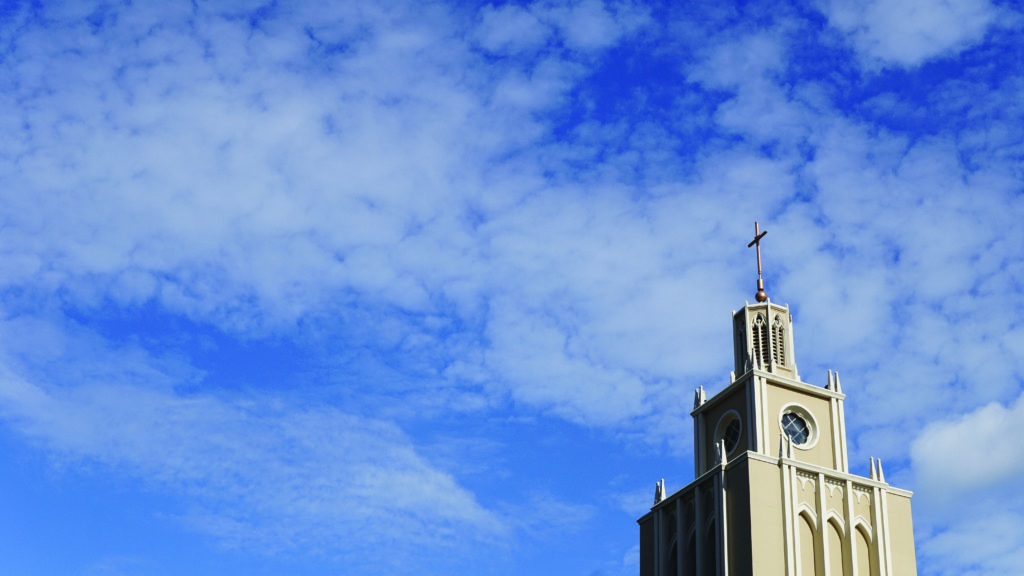
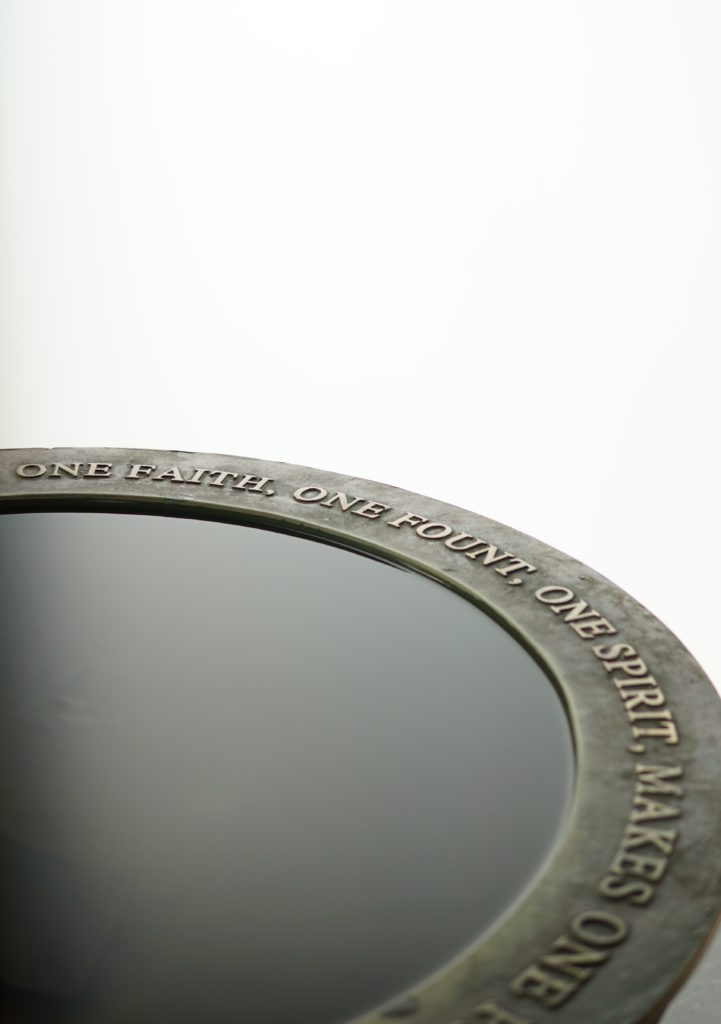

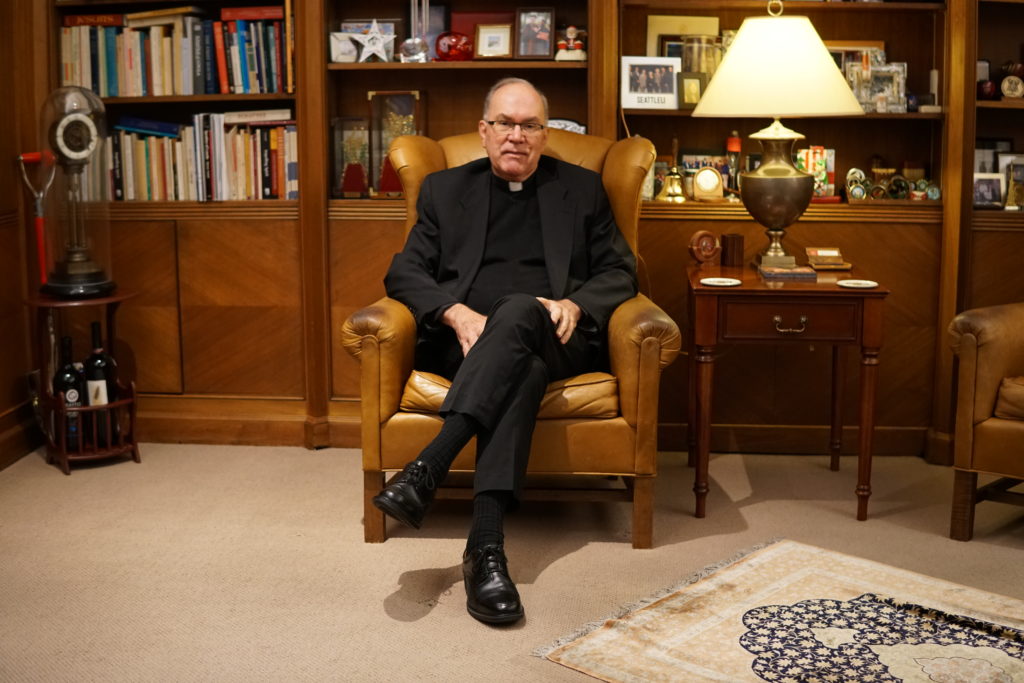
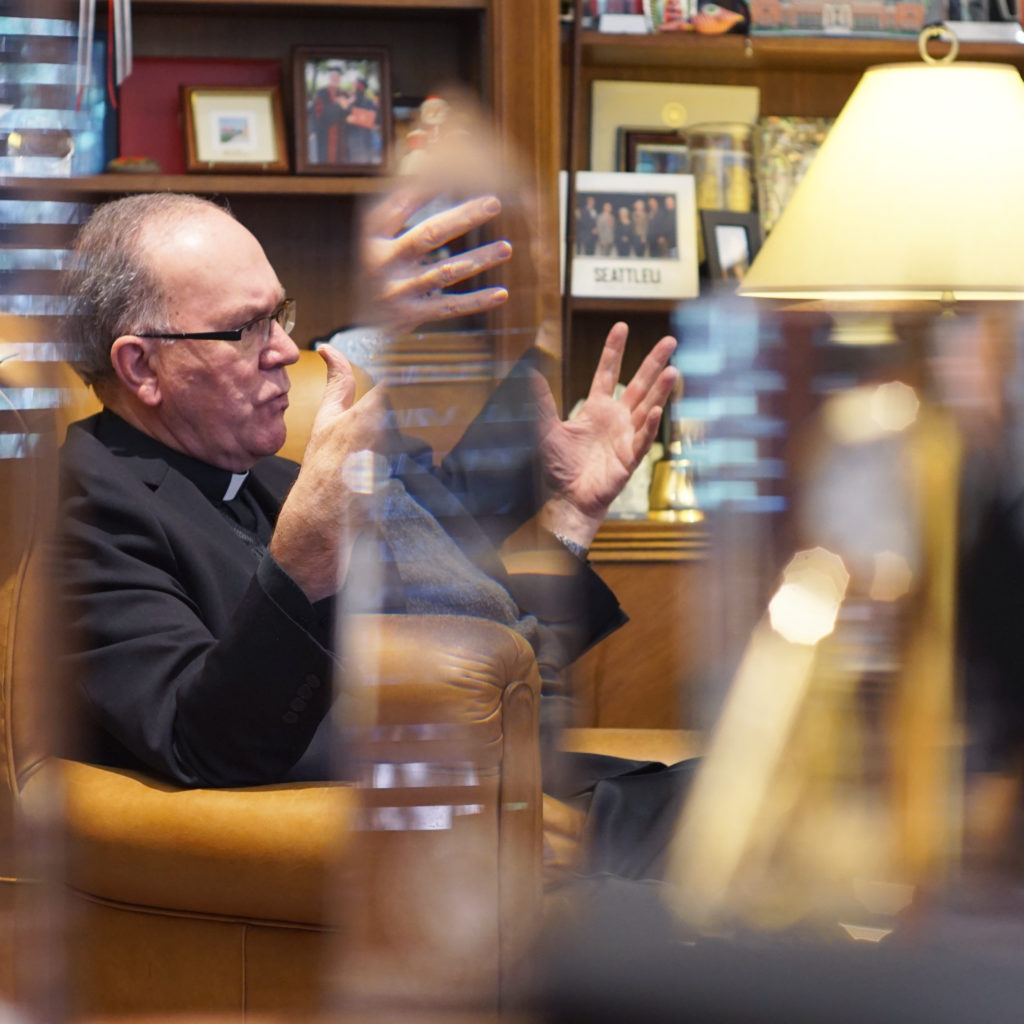
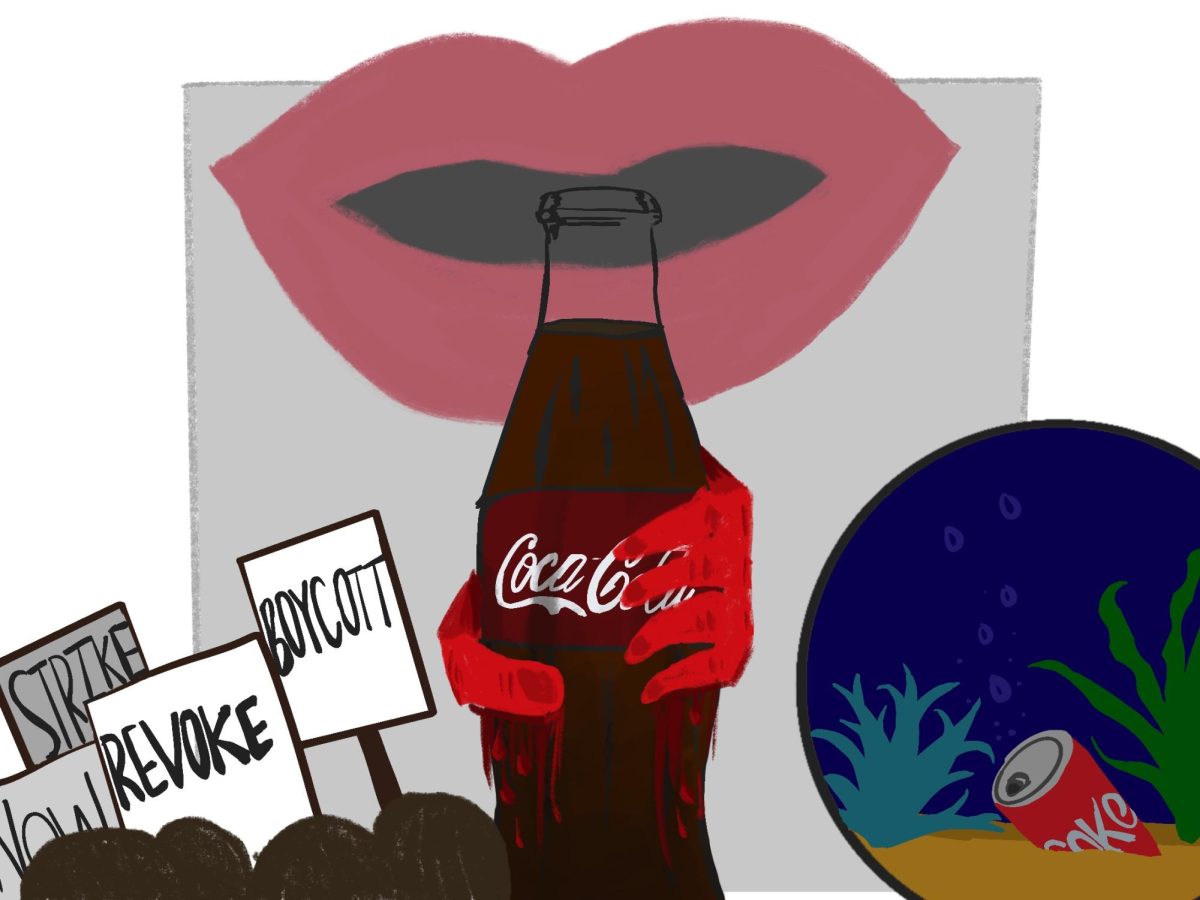


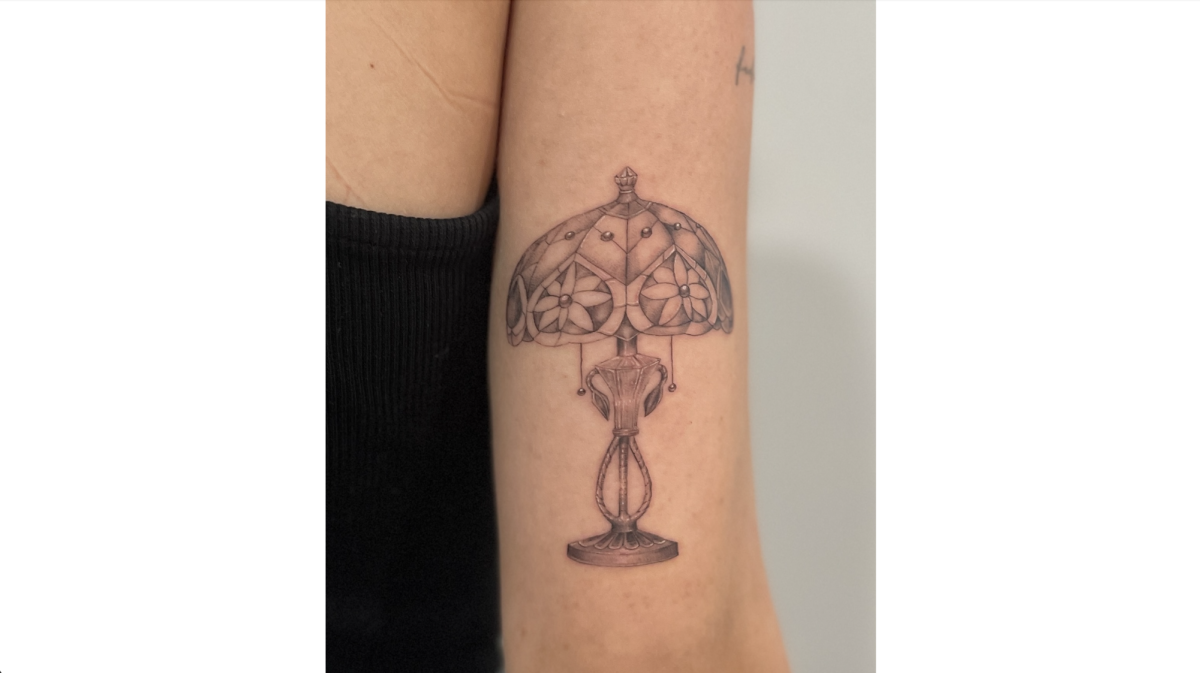
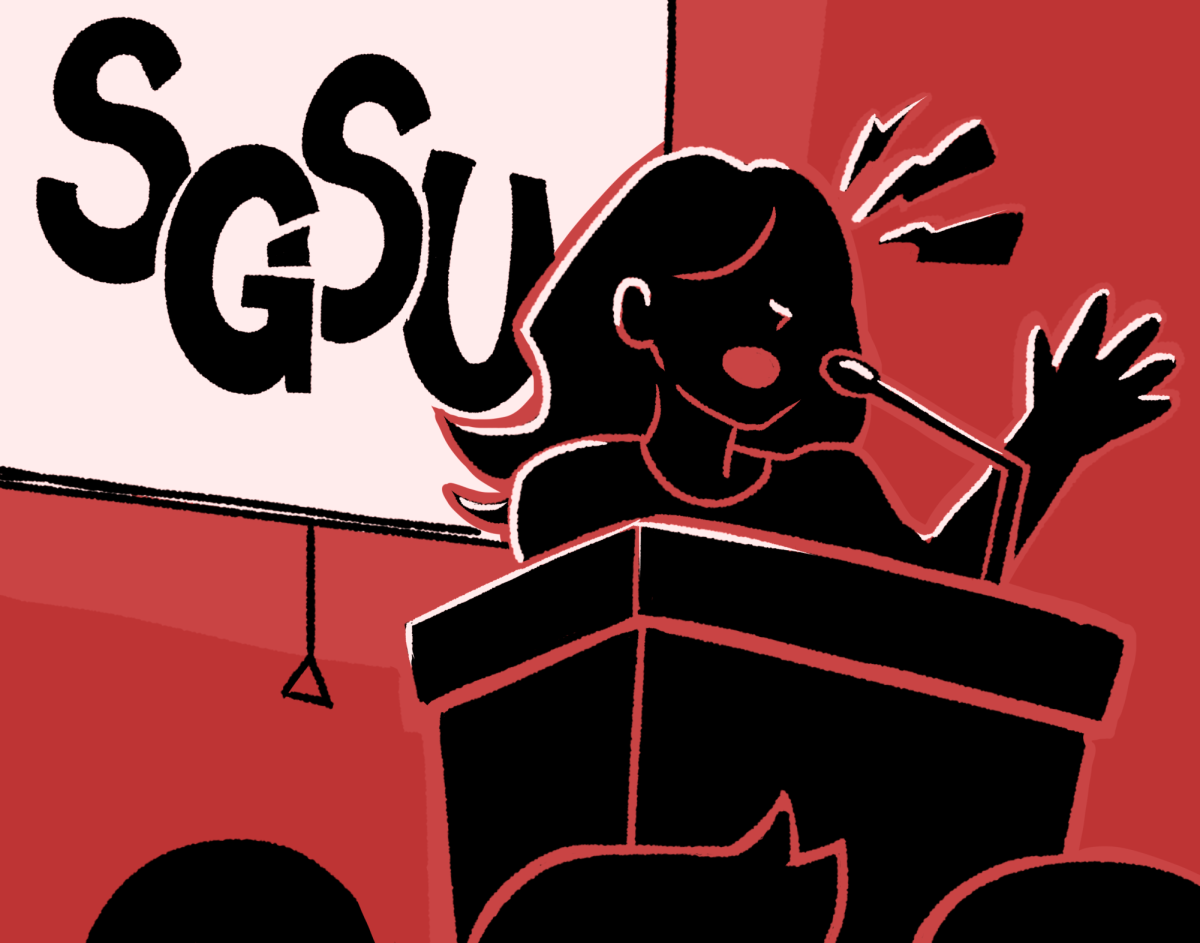

Brian Aker
Aug 18, 2018 at 6:44 pm
Stuart Greenberg had people working for him on reports at the time of this event.